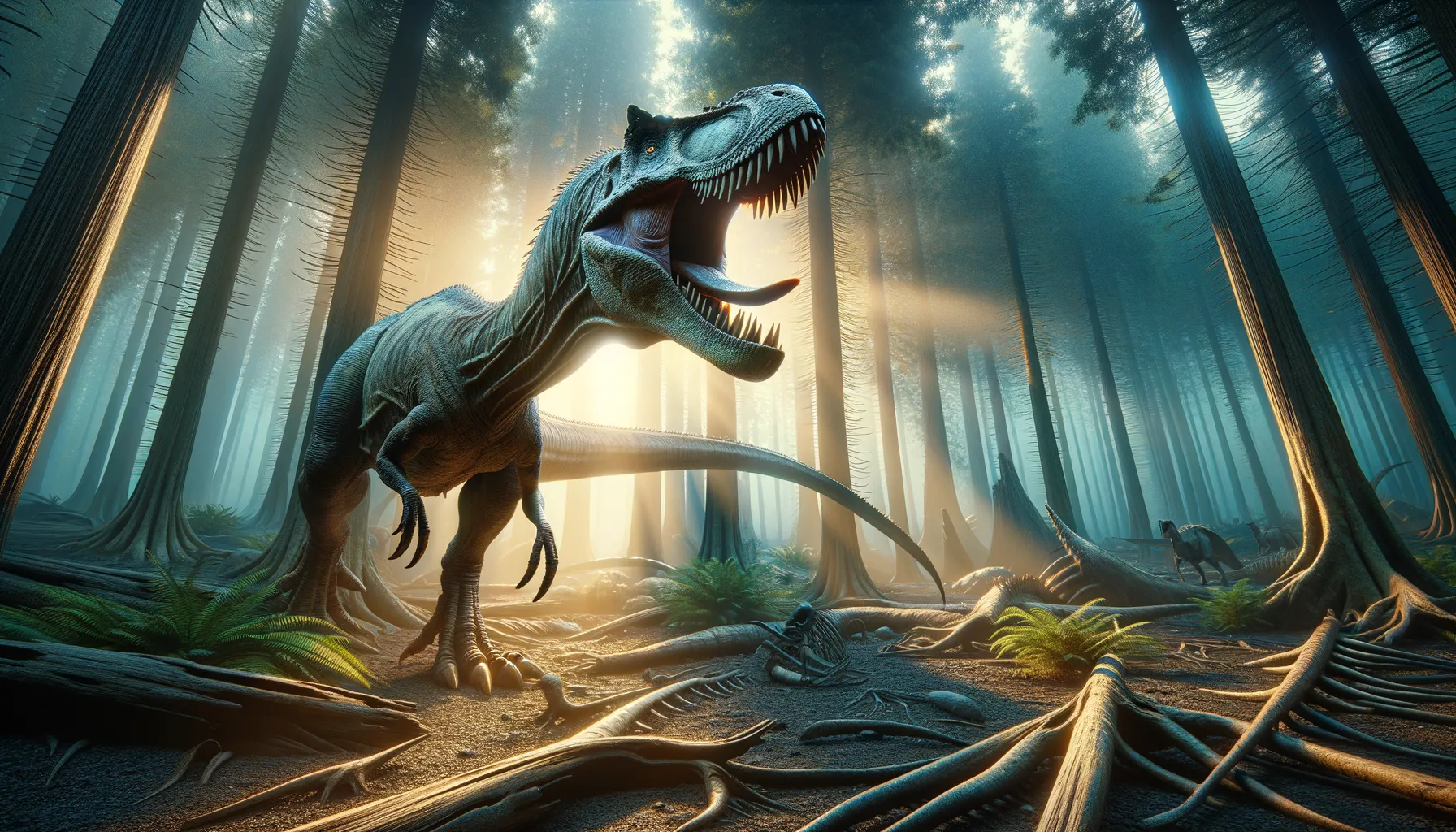
Teihivenator
Ferocious predator of the ancient wild.
Period
Cretaceous
Length
Roughly 6.5 to 7 meters long.
Height
Approximately 2.5 meters tall.
Weight
Around 500 kilograms.
Teihivenator was a carnivorous theropod dinosaur known for its agile build and sharp teeth. It roamed the landscapes of what is now North America during the late Cretaceous period. Researchers continue to study its role in the ecosystem, contributing valuable insights into theropod diversity and evolution. Despite its fearsome appearance, much of its life remains a mystery, pieced together tantalizingly through fossil finds.
Diet
Teihivenator was a carnivore, preying on other smaller dinosaurs and potentially scavenging when the opportunity arose. Its diet would have included relatively small to medium-sized vertebrates, providing the necessary nutrients for growth and survival.
Hunting
It likely relied on its speed and agility to hunt, utilizing a combination of stealth and quick attacks to capture prey. Behavioral adaptations might have included hunting alone or in small groups, depending on the availability of prey and environmental conditions.
Environmental challenges
Changes in climate would have posed significant challenges, affecting both food availability and habitat conditions. Competition with other predatory species could have influenced hunting patterns and territory establishment. As the earth's geological conditions shifted, finding suitable nesting and feeding grounds would also have presented challenges.
Speed
Moderate, like other medium-sized theropods.
Lifespan
Estimated up to 30 years in the wild.
First discovery
Discovered in the late 20th century in North America.
Fun Facts
- Teihivenator was a relatively small meat-eating dinosaur that lived during the Cretaceous period.
- Its fossils were discovered in North America, offering clues about prehistoric ecosystems.
- Teihivenator is part of the Tyrannosaur family but much smaller than its famous cousin, the T. rex.
- The name Teihivenator means 'strong hunter', reflecting its presumed predatory nature.
- It had sharp teeth and powerful legs, ideal for catching prey.
- Despite being a fierce predator, Teihivenator likely scavenged for meals as well.
- The discovery of Teihivenator helped scientists understand more about the diversity of dinosaurs during the Cretaceous period.
Growth and Development
Like many dinosaurs, Teihivenator likely experienced rapid growth during its juvenile stages, reaching near-adult size relatively quickly. This growth spurt would be critical for survival, reducing vulnerability to predators. As it matured, physical changes would have included the strengthening of bones and muscles, important for its hunting efficiency.
Habitat
Teihivenator inhabited semi-arid regions with scattered vegetation, providing both hunting opportunities and cover. Its environment ranged from open plains to forested areas, reflecting seasonal variations in climate and vegetation. Access to water sources would have been vital, influencing its movement and territorial patterns.
Interaction with other species
Interactions with other theropods might have ranged from competitive to predatory, depending on food availability. It could have shared its habitat with herbivorous dinosaurs, which served as potential prey. Symbiotic relationships, like scavenging from larger carnivores' kills, may have existed.
Natural lifespan
Its natural lifespan was estimated to be around 25 to 30 years.
Reproduction
Reproduction likely involved laying eggs in nests, possibly in secluded areas to avoid predation. Parental care, if any, might have been minimal, although the presence of nest sites suggests some level of protection. Nesting habits and incubation periods remain subjects of scientific inquiry.
Social behaviour
Teihivenator may have engaged in solitary hunting but might also have shown social behaviors during mating seasons. Territorial displays could have involved vocalizations or physical posturing to assert dominance or attract mates. The nature and extent of its social structure remain largely speculative.
Fossil locations
Fossils predominantly found in North America, contributing significantly to our understanding of Cretaceous theropod diversity. Key sites include those with rich sedimentary deposits, ideal for bone preservation. These fossil discoveries provide insights into the past ecosystems of their time.
